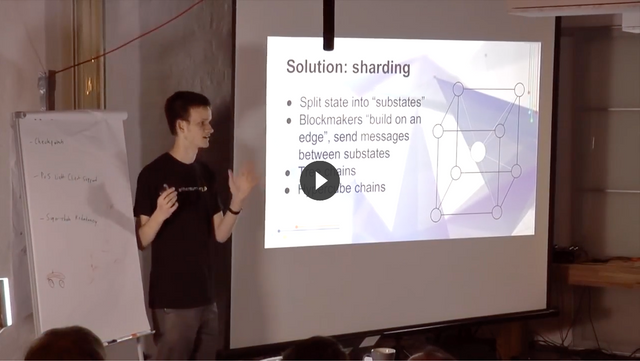A sharding-mechanism with roots in Bell's work, a sort of "proof-of-structure"
"As to wave function and it's use - it's actually lot more complex and I work now on making it fully implemented. It has lots to do with real world deliberations and Bell's works. " - Hibryda, October 24, 2017
The innovation in BitLattice is that the state is a hyper-lattice rather than a chain, which means it can add transactions in parallel. Within the lattice, transactions are linked to four surrounding transactions, and their position is cryptographically signed by "authority entities" that trigger each other with calculation requests, and compare results to be sure that a transaction is valid.

To let "miners" work on different local clusters of the lattice, a sharding-mechanism called "proof-of-structure" calculates a reference homogenic field, with input from local shards, and verifies the integrity of the state as a whole from cumulative states of nodes, with the use of wave functions as mathematical proofs that rely on intrinsic properties of lattices as metric structures.

BitLattice as Ethereum 2.0, and how sharding required a new state topology
If Ethereum was Bitcoin 2.0, and added smart contracts (Szabo, 1997) to the state, then how Vitalik Buterin has described what Ethereum 2.0 would look like is that it would use sharding, with thousands of individual shards that all manage a piece of the state as a whole, and if you need to send a transaction from one shard to another shard, then the message finds its way across, via a sort of jury selection.
BitLattice as generic consensus similar to Ethereum as a generic rule-space
"We can have a blockchain where instead of a blockchain working like a Swiss army knife where you have five different tools for five different categories of applications, you have a blockchain that understands general-purpose programming language. ” - Vitalik Buterin, TechCrunch's Disrupt 2017[1]
Prior to Ethereum there were separate blockchains for separate types of rules, namecoin for DNS, "colored coins" for tokens, all very limited, restricting themselves to supporting only one or a few specific applications. The core idea behind Ethereum that allowed it to get past those limitations was to have a blockchain protocol with a built-in programming language, allowing any application to be written on top, and its rules enforced by the blockchain, a general purpose blockchain computer.[2]
Hibryda is doing for consensus what Vitalik Buterin did for applications. Instead of following along with the trend of interoperability[3], which rhymes with the trend of very limited special-purpose blockchains that lacked incentive to integrate because there were not that many applications attached to them, BitLattice is building a general-purpose consensus, one that satisfies the demands of interoperability without the need for multiple states, a single state, Gavin Wood's vision of a global singleton (2014, [4]).
The tweet below from Polkadot is where the world was when it came to logic on blockchains, before Vitalik Buterin built a turing-complete machine. Same trend will exist for consensus, one global state, first many then disrupted by one that integrated all what came before.



Thanks for this great information
Highly rEsteemed!
interesting usage it has and nice structure to follow up thanks for sharing the details
There may be overlap with microtubules, also lattice structures, are probably chronological in some way, "history machines", and probably use wave functions to calculate reference homogenic fields. Probably a good idea to invest when the time comes for that.
Cytoskeletal Signaling: Is Memory Encoded in Microtubule Lattices by CaMKII Phosphorylation? (2012)
https://steemit.com/news/@bible.com/6h36cq